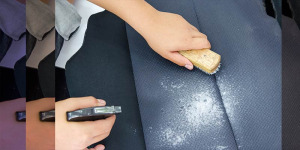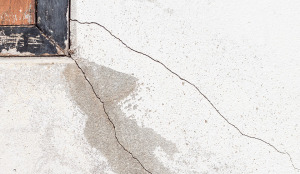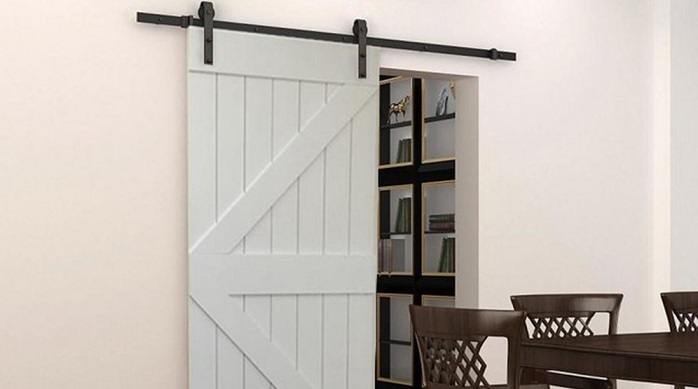
Learn how to paint plastic with spray cans, with this quick guide. Painting plastic doesn’t have to be difficult, if you follow these steps.
If your plastic-made patio furniture has lost its luster or you want to replace an old plastic product, spray painting is the quickest solution to make it drastically more referable.
After a few months of sun exposure, your plastic material will start changing the color and also this is the very time you may want to replace it.
But once you know how to paint plastic with suitable spray cans, you’ll see the stunning changes in your plastic furniture or things. Want to know the steps? Let’s dive in.
Materials You’ll Need
- Spray paint*
- Spray primer, suitable for plastic*
- Plastic furniture or item to paint
- Mineral spirits
- Sandpaper, fine grit
*You can buy either paint only, or paint + primer combined, depending on the brand you get. If you buy paint only, you will need to buy and apply a coat of primer as well. If you buy a paint + primer combo, you can skip the primer.
How to Paint Plastic with Spray Cans
1. Clean the Surface
It is important to clean the furniture before painting to ensure an excellent paint finish, or else the paint cannot adhere correctly.
Wash the furniture with a 50/50 mix of liquid detergent and water, as discussed in our article on how to clean furniture before painting here. You can then follow this up with mineral spirits or rubbing alcohol to remove any particles, dirt, or sticky substances stuck to your substrate. For detailed instructions, head over to that furniture cleaning article mentioned earlier.
2. Prime the Surface
Some people suggest skipping this step. But I think it produces with better results if you prime the surface. In fact, I believe priming is essential for any paint job, and if you are taking the time to paint, priming is not a step you should ever skimp on. That is, unless you buy a spray paint with primer and paint combined.
- Sand the surface to a dull finish with the aid of a fine-grit sandpaper.
- Wipe it with a damp cloth to remove any residue from sanding.
- Spray the surface with a primer suitable for plastic.
- Before proceeding further, let your item dry thoroughly.
3. Spray Paint the Plastic
Next, we come to actually painting. Use the following techniques to apply the paint.
If this is your first time spray painting, test on some scrap card or wood before starting to get a feel for it.
- Do not stand too close to the furniture, because the paint will apply too thickly to some areas and be inconsistent. Spray from a sufficient distance so as to produce a consistent and even coating, about 1ft (30cm) is a good starting point, and adjust your distance as you go along.
- When you spray, move across the furniture vertically or horizontally, back and forth. Aim for a thin and smooth coating across the surface, which is not too concentrated in any areas. If there are areas that are too concentrated (or dripping) you may be either standing too close, or applying too much spray paint to one spot.
- Never start or stop at any point other than the edges of the surface. It creates variations in the thickness of the coat that can mar the paint finish. Try to spray from one edge to another, in one clean move.
4. Apply Another Coat
Allow the first coat to dry, then apply a second coat.
Some people like to sand the surface between coats, but for plastic and spray paint, I find this to be optional. I personally don’t sand between coats of spray paint, as I find the spray paint does a good job of adhering on surfaces without it. This is a personal preference, and I’m sure many disagree. Feel free to sand if you like, but I wouldn’t bother when spray painting plastic.
After applying the second coat, dry the color for an hour, or longer depending on the weather and the spray can directions.
Inspect the furniture, and decide if it needs a third coat. If so, wait until it is fully dry, then spray the third coat.
Final Words
Voila! You have now painted your plastic furniture! While spray painting plastic may seem like a tricky endeavor, in reality it is not really any different from spray painting anything else. The most important task is choosing the right spray paint and in particular, one that is suitable for plastics, as these are specially designed to adhere to plastic surfaces while other spray paints may not.
As with any painting task, don’t be disappointed if your first attempt isn’t as planned. It can take time and patience to get it perfect.
Now that you know how to spray paint plastic, how about trying your hand at painting a metal bed frame, or for an extra challenge, painting your kitchen cabinets?
Author
-

A jack of all trades, Todd has been a DIY enthusiast, traveler, and writer for many years. He has a deep understanding of all types of painting tools and door hardware, and has shared many articles on these topics throughout the years.
View all posts









